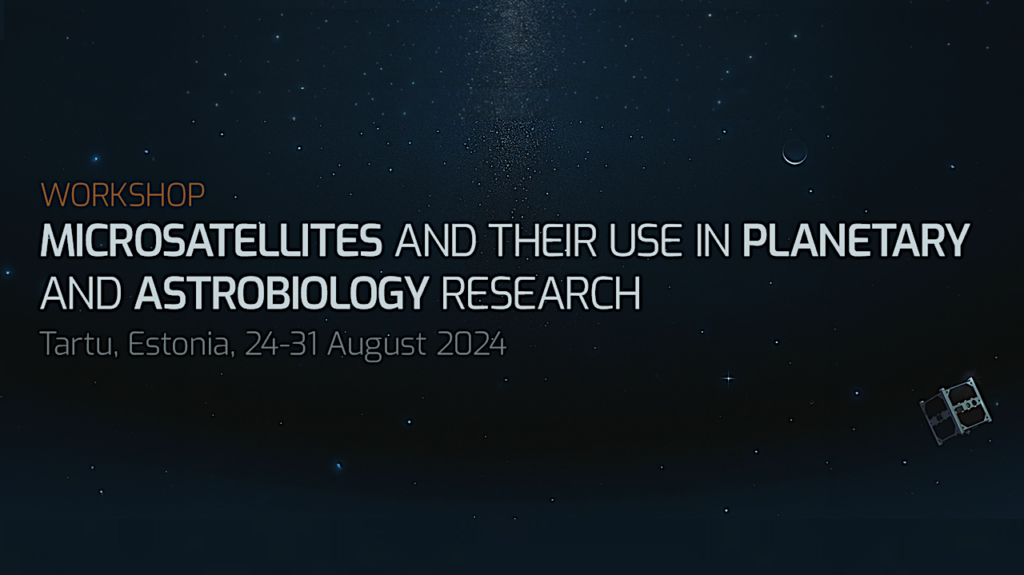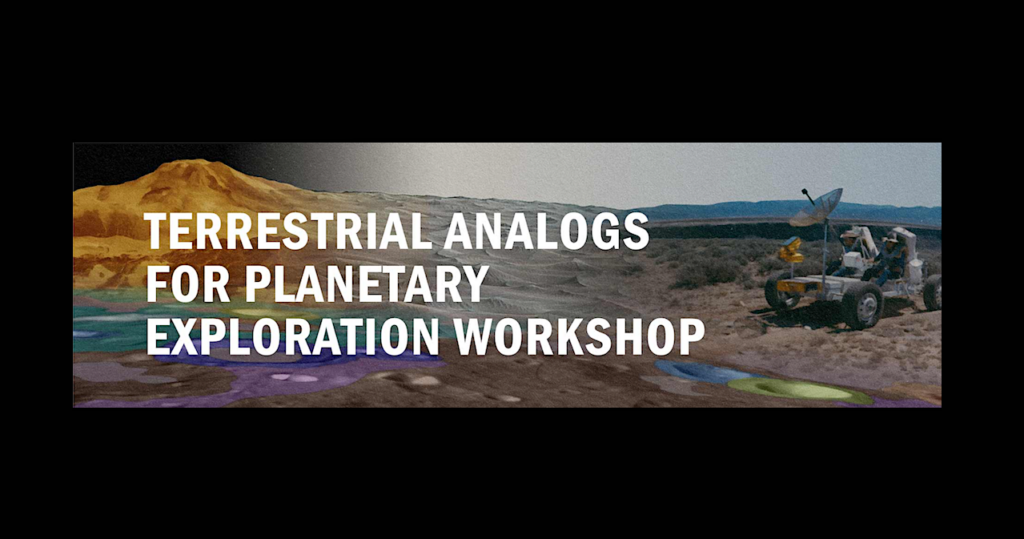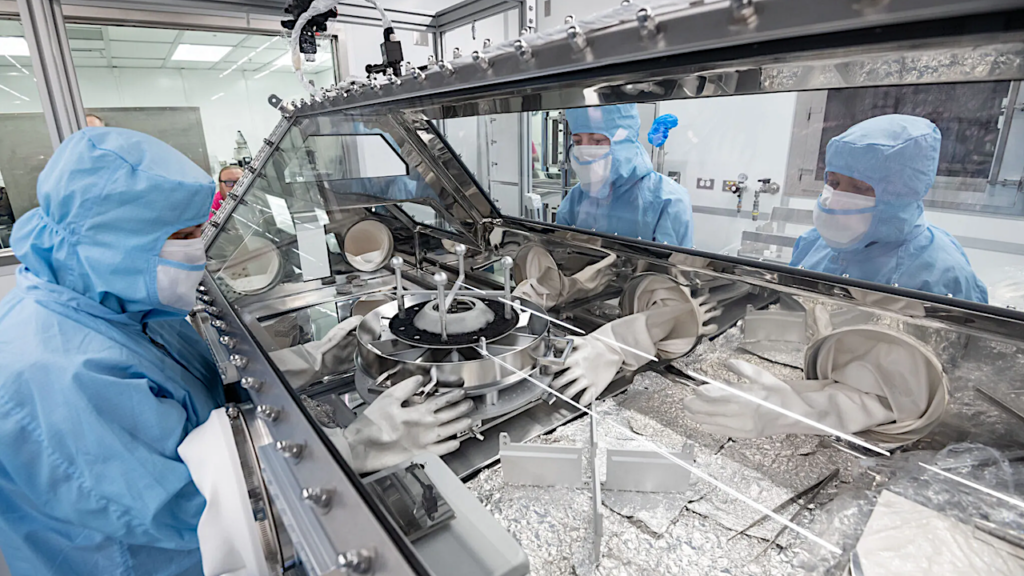Call for Abstracts: Astrobiology Related Sessions at the 2010 AGU Fall Meeting
Meeting Dates: December 13-17, 2010
Abstract Submission Deadline: September 2, 2010.
The following is a list of some of the astrobiology-related sessions that will be held at the 2010 AGU fall meeting. For more information and to submit an abstract: http://www.agu.org/meetings/fm10/program/abstract_submissions.php
B16: Process-based Approaches in Geobiology: Understanding Modern and Ancient Systems
This session provides an interdisciplinary forum for research on organism-environment interactions and their coevolution over geologic time. We solicit innovative contributions that address critical problems in geobiology, ranging from studies of chemical and physical proxies in ancient sedimentary rocks, to those examining modern processes. Approaches may include: multi-proxy isotope studies, novel isotope systems (e.g. Fe, Mg), organic geochemistry, microbial physiology, and molecular evolution. Studies of particular interest shed light on the geobiological processes that control the redox budget of the fluid Earth, microbial and eukaryotic evolution, large-scale climate change, and mass extinctions.
B18: Paleoecology of Climate Change in Pre-Neogene Continental Environments
High resolution climate proxy and fossil records have opened a new window into how terrestrial and freshwater biotas responded to climate change in the geological record prior to 20 million years ago. This session will explore how these climate and paleoecological records, in concert with refined geochronological control, have revised our understanding of major paleoenvironmental changes during the Phanerozoic, including mass extinctions, hothouse/icehouse worlds, and bolide impacts. The goal of this session is to present novel high resolution records from different spatial and temporal scales that address how continental biotas responded to major climate events in Earth history prior to the Neogene.
B19: Omics Approaches to Geobiology
Genomics, transcriptomics, and proteomics generate an abundance of sequence information about natural communities. These -omics data offer unprecedented opportunities for linking geochemistry and biology to answer questions about energy flow and elemental requirements at the scale of individual cells to entire communities. This session welcomes contributions that integrate molecular and geochemical approaches to understand the formation and function of microbial communities in a range of environments including hydrothermal, soil, and aquatic ecosystems.
B24: Cryospheric Biogeochemistry – Microbially Mediated Processes Within Ice, Water and Till.
There is increasing realization that microbial processes occur on the surface, within and beneath glaciers and ice sheets. Cryoconite holes are oases of biological activity on glacier surfaces, microorganisms survive the journey from surface snow through to the bed of the Antarctic and Greenland Ice Sheets, and most subglacial aquatic environments are colonized by microorganisms, which span the range of REDOX conditions from fully oxygenated to fully anoxic. The state-of-the-science revolves around how microbial processes map onto the diverse range of cryospheric aquatic environments, from ice veins to channels and lakes, and the impact that they have on glacial water and gas geochemistry.
B25: Biogeochemical Cycling in Glacial Ecosystems
Despite the fact that glacial ecosystems in many regions are being rapidly altered by climate change, relatively little is known about their biogeochemical dynamics. Here we seek contributions that address biogeochemical cycling along the glacial continuum – from glacial ice to sub-glacial and recently deglaciated soils to pro-glacial streams and rivers. In particular, we are interested in research that provides new insights into the biogeochemical functioning of glacier ecosystems and how they may be impacted by continued climate warming. We intend for this session to bring together research on terrestrial, glacial, and aquatic biogeochemistry within glacial ecosystems.
B40: Mission to Mars and Beyond: What Can We Learn About Life Detection From Exploring Extremes on Earth
Analog research projects are an important tool for developing and validating mission concepts, exploration strategies, science operations, and prototype technologies. These science investigations entail field research in terrestrial environments that are analogous to those found on other planets, past or present. Analog missions are used to test hypotheses on the limits to life on Earth and habitability elsewhere, and to validate biosignature detection techniques and contamination mitigation strategies. Results from analog mission activities are solicited. This session will be run in conjunction with a co-located workshop focused on analogs for Mars Science Laboratory landing sites.
B43: Drilling Deep Time: Windows into Earth’s Early Biosphere
The emergence of the modern biosphere was presaged by key environmental and evolutionary transitions during the first half of Earth history. These transitions are dimly discerned because of the paucity and poor preservation of surface exposures. A diverse set of drilling projects from around the globe are opening new windows into this time, transforming our understanding of Earth’s early biosphere. This session welcomes the latest results from recent and ongoing efforts, emphasizing, but not limited to, the Archean Eon.
B48: Geochemical Signals of Early Diagenesis
Early diagenesis encompasses a variety of microbially mediated reactions that oxidize organic carbon. The environment of early diagenesis is one of the most biogeochemically dynamic settings on the planet, impacting budgets and fluxes of carbon, trace metals, nutrients and gas (methane) hydrates. Moreover, these processes can have significant impact on sedimentary records of biogeochemical tracers/proxies. It is thus important to identify geochemical signals of early diagenesis and to quantify the fluxes and impacts of these diagenetic reactions. This session invites abstracts from multidisciplinary science that, through the novel biogeochemical analyses or modeling, has identified or quantified biogeochemical signals of early diagenesis.
B57: Geochemistry and Geobiology of Terrestrial Thermal Systems
Terrestrial hydro/geothermal systems are globally distributed, are hosted by many geological environments, and are home to a vast array of microbial ecosystems. This session invites abstracts on all aspects of the geochemistry, mineralogy, micro- and molecular biology of terrestrial thermal systems across geologic (subduction zones, volcanoes, hotspots, latently-heated orogenic systems) and geographic settings (Iceland, Chile, Italy, Kamchatka, New Zealand, United States). The goal is to explore similarities and differences among terrestrial hydro/geothermal environments; integrate current understanding of these systems; and develop new understanding of the range and variability in their chemical and biological diversity.
OS08: Trace Metals in Sulfidic Environments
Anoxic and sulfidic environments can exert a strong influence on the biogeochemical cycles of trace metals. In such environments, metals react with sulfide to form metal-sulfide complexes, which can be insoluble. These interactions have implications for metal speciation and hence bioavailability. Sequestration of metals in both modern and ancient sulfidic settings is an active area of research. The same is true for the uptake and bioaccumulation of trace metals by anaerobic microorganisms. This session will encompass both abiotic and biotic studies of trace metal reactivity in sulfidic systems. We aim to increase dialogue between researchers working with different approaches, such as experimental methods, in situ measurements and biogeochemical modeling.
P05: Eyes on Enceladus
During the past 6 years, the Saturn-orbit
ing spacecraft Cassini has made several close flybys of the small active world, Enceladus, and several more are planned over the next 7 years. Observational and theoretical results accumulated thus far indicate a high likelihood that this body houses within it a liquid watery environment containing the essential ingredients required for a habitable zone. In this session, we will focus on the most recent observational and theoretical findings on the chemistry, state and dynamics of Enceladus’ jets and plumes, the moon’s thermal and interior state, and geologic activity, as well as its astrobiological potential. New results from the 2010 Cassini flybys of Enceladus that bear on these topics should be directed to this session.
P10: Planetary Analogs: The Good, the Bad and the Ugly
Certain modern environments and their ancient records found on Earth act as a basis of comparison to other places in our Solar System. These analog sites help us understand potentially important processes and systems, like the nature and preservation of biosignatures. They also provide testing grounds for instruments, rovers and mission operations scenarios. There are terrestrial analogs for dry, cold and acid Mars and even the icy moons of the outer planets. However, they are not ideal analogs, and experimental investigations can only simulate limited aspects of planetary environments. In this session we seek a broad range of contributions that discuss work on planetary analogs, their merits and deficiencies, and relevance to future missions.
P11: Titan’s Methane Cycle and its Effect on the Surface
Titan’s methane cycle is a major contributor to the formation of features seen on the surface, such as lakes, seas, rivers, and dunes. As seasons change, observations can search for possible related surface and atmospheric changes. This session will focus on the latest Cassini and ground-based results. Theoretical work that can help explain recently reported observations is also encouraged.
P12: Planetary Radar Investigations: Observations, Theory, Lab Measurements, Field Analogues, and Future Opportunities
Radar has become an increasingly utilized tool for investigating the surface and subsurface properties of planets, moons and other Solar System objects. Such techniques provide important insights into their composition, structure and evolution, the potential existence of habitable environments, and the availability of critical in situ resources for supporting future human exploration. Abstracts addressing radar results from current missions, Earth-based observations, theoretical and laboratory analyses relevant to the interpretation of radar data, field investigations of analogue environments, and potential future radar investigations, are specifically encouraged.
P15: The Potential for Water-Organics Interactions on Titan
Is there liquid water on Titan? Impact melting, cryovolcanism or an internal ocean are all reasonable possibilities for water sources on Titan, with the potential for mixing organics with liquid water. In this session we wish to address a wide range of materials and environments, including regoliths, cryovolcanic flows, and fluvial and aeolian systems, that impact the presence or absence of liquid water and its possible formation and evolution. Comparisons with Ganymede and Callisto are encouraged. Observations, laboratory experiments and modeling relating to the presence of liquid water are also solicited.
P17: Icy Ocean Worlds
Strong evidence exists for liquid water oceans in several of the Solar System’s icy worlds. These include the icy Galilean satellites Europa, Ganymede, and Callisto, as well as Saturn’s moons Titan and Enceladus. Some medium-sized icy bodies, including Triton and the icy dwarf planets, may also contain (or have once contained) oceans. This session encourages presentations related to oceans within icy bodies, including their geological and geophysical signatures, composition, material exchange processes, and potential habitability.
Source: NAI Newsletter








